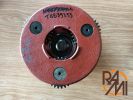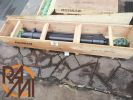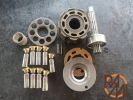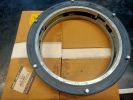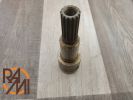If you deal with construction machinery, you have certainly heard of so-called "reconditioned parts", also said "refurbished parts". Many people view them with suspicion because they are not clear about what they are, confusing them with used spare parts.
In this article we want to provide some clarity. We will explain what a reconditioned spare part is, how it differs from other spare parts and in which occasions it might be the right choice for repairing your vehicle.
Fundamental differences between new, used and reconditioned
Spare parts can be of three types: new, used and reconditioned.
The new spare part, by definition, has never been used. It is purchased directly from the parent company and installed for the first time in the customer's machine.
A used spare part is a component of a construction machine that has been removed and stored for reuse. Depending on the case, it may be more or less worn in its functional components.
A reconditioned spare part is a component that has already been used in a construction machine, but, unlike a used part, has gone through a repair and testing process that allows it to be 100 per cent functional. In terms of performance, it is comparable to a new part, although its appearance may be a little 'worn'.
Which components can be reconditioned?
In general, hydraulic and engine components can be reconditioned: pistons, pumps, alternators, axles, radiators, mufflers, translation and rotation gearboxes...
Individual components such as pins, bushings and seals cannot be reconditioned. On the contrary, in the reconditioning process they are among the first things that are usually replaced.
It is rare, but not impossible, to find reconditioned electrical or electronic components.
The advantages of the reconditioned part
-
Reliability
As we have mentioned in previous sections, reconditioned parts offer performance close to that of new parts. Each spare part that goes through the reconditioning process is carefully examined by specialised technicians. The first step in the process is the disassembly of the part. After that, the components are checked: if they are defective or worn, they are completely replaced. Once repaired and reassembled, the part is tested to verify its correct functioning. If the result is positive, the part is ready to be installed!
-
Cost-effectiveness
For the same price, the reconditioned part offers a great economic advantage. In fact, it is possible to obtain a performance similar to that of a new component, but at a much lower price.
-
Sustainability
The use of reconditioned parts makes it possible to reuse a component that already exists, avoiding the consumption of valuable raw materials such as steel, copper and aluminium. In addition, remanufacturing a component requires much less energy than producing a new part.
-
Availability
Construction equipment manufacturers, such as CAT, Doosan and Bobcat, produce and sell new spare parts for their models.
However, when a model becomes obsolete, the demand for spare parts decreases, so it is no longer economical for the parent company to produce them. As a result, older models remain largely without new spare parts.
If you find yourself with a vehicle failure and cannot find new components, you can always rely on reconditioned parts. Availability has no time limits: you can find highly efficient spare parts even for machines that are decades old!
Can the reconditioned spare part be used on all vehicles?
The reconditioned part can be used on any construction machine, as long as the part is compatible with the vehicle where it is installed. Verifying this is easy: just check whether the part number matches the one specified in the manual for your construction machine model.
For new machines under warranty, the spare part must not only be compatible but also new, otherwise the warranty is invalidated.
How a reconditioned spare part is created: a concrete example
A long time ago, one of our customers had a problem with the alternator of his excavator. Due to the warranty, it had to be replaced with a new alternator.
The part to be replaced, despite having a fault, was still in good condition. We then examined it, noted the defective parts, classified it and finally stored it in our spare parts warehouse.
In the meantime, the machine model from which it was extracted has become obsolete, with the result that the parent company no longer produces specific spare parts for that model.
Many years later, we received a request for an alternator with the serial number. From here we traced the part: it was the part we had been stocking for over ten years!
We immediately took it to the workshop. There, our technicians reconditioned it, replacing the defective parts and testing it to make sure it worked properly. Finally, we shipped it to the customer, who put it in his excavator and gave it a new lease of life!
This is just one of many stories we could tell. As a result of years of experience, we have built up a collection of thousands of spare parts for construction machines of various brands. Some parts are almost unique because they come from models that have been out of business for years. We are in no hurry because we know that, sooner or later, someone somewhere in the world will need them!
Tips for choosing MMT spare parts
To conclude, we leave you with some tips that will help you choose the right spare part for your purpose:
- If you have a new machine under warranty, you need to install a new spare part.
- If the machine has a lot of working hours behind it, and therefore has a low market value, it is better to fit a reconditioned part if possible, otherwise used.
- If the machine is a very old model, you will not find new parts, only used or reconditioned ones.
- If your machine is close to being decommissioned, we recommend used parts that will allow you to use the machine for a while longer without costing you too much money.





